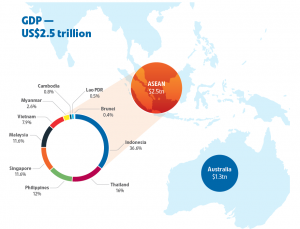Winning and Losing
For any business, being able to retain customers is one thing but understanding why you weren’t able to conquer the ones that didn’t make the purchase is just as important.
From my years of experience conducting market research, many companies seem to focus solely on business they do have (which is great) but forget about the sales they should have made but didn’t.
I have devised a simple and practical, yet effective, do-it-yourself market research strategy which any business can implement in-house. It’s called the Win/Loss Analysis and forms the first chapter in our series, Market Research Made Easy (watch this space!).
Understanding why customers didn’t choose you but someone else is central to this analysis. When you’re asking the ‘ones that got away’ as well as your usual customer base, you are essentially combining a competitor analysis, a customer satisfaction survey, your company’s own brand perception among your customers, and at the same time highlighting areas of the business which require much needed improvement.
How did the idea of the “win/loss analysis” originate?
- After having worked with numerous clients over the years, we found ourselves talking to their customers about not only what worked well for them but also what didn’t work well for them.
- We then translated this into asking lost sales (i.e. people who obtained quotes or made an enquiry but didn’t proceed with a purchase) why we didn’t win their business.
- The analysis from these two groups then presents significant opportunities for companies to improve operations at all levels.
Why ‘winning’ and ‘losing’?
- It’s very simple: we needed to examine the differences between getting the sale (winning) and not getting the sale (losing).
What are some of the key outcomes of the analysis?
- This process can pick up significant issues; for instance the importance of inventory control or a company’s ability to provide the right training to deliver their product or service, or any problems relating to the sales function such as quote turnaround times etc.
- Companies can also identify and communicate the how and what of their competitive advantage and unique selling proposition (USP).
- And, just as important, it can identify operational issues such as service protocols and make sure they match customers’ expectations.
What are some the things to consider when doing your own Win/Loss Analysis?
- Don’t be afraid to ask your customers tough questions (e.g. what did we get wrong or what can we do better for you?).
- Make sure your questionnaires are consistent; it is important to use the same questionnaire for your customers so you can compare the results.
- You don’t have to ask many of your customers or lost sales; 10 in each group is usually enough.
- Make sure the questions are relevant to your customers and you are prepared to make changes based on those findings; good or bad.
- Let your customers know what changes you plan to implement in your company, product, or service offering in response to their answers. This can translate into more customer loyalty.
- Don’t let your ego get in the way; it’s not about you … it’s about your company and, importantly, your customers.
- Once the analysis is done, be sure to follow-up any changes and measure how effective those changes are with your customers. Do this over regular intervals.
—
Don’t wait.
Download your complimentary copy today.

